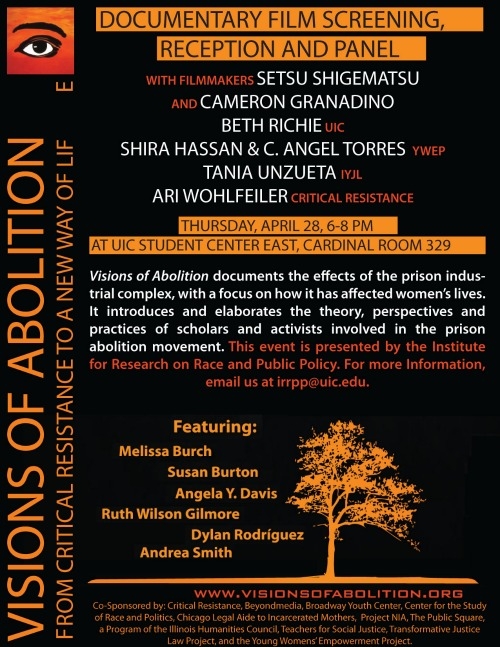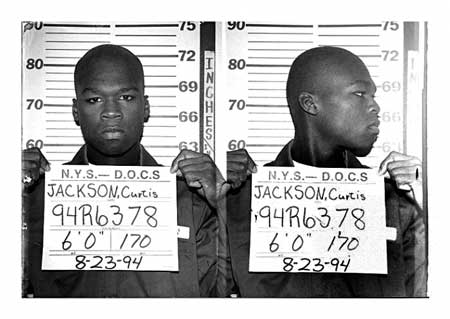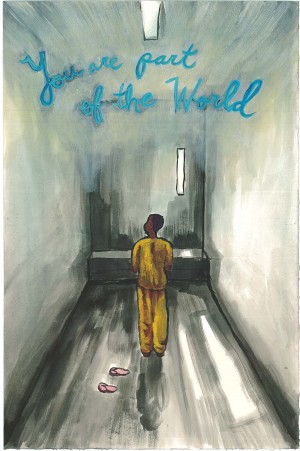Searching for Kim Jones (a.k.a. Lil’Kim): Black Girls Behind Bars…
[cross-posted at the Chicago Taskforce on Violence against Girl's Blog]
Recently an article by Rachel Pfeffer titled “In Post-Racial America, Prisons Feast on Black Girls” has been making the rounds on social media. I am glad to see the attention that it has garnered. I hope that this attention translates to action. The article opens with these words:
African American girls and young women have become the fastest growing population of incarcerated young people in the country. Efforts to stop mass incarceration focused on black girls are almost nonexistant in government policy, the media, foundations and academia.
A recent study by Moore and Padavic points to how black girls are discriminated against in the juvenile justice system:
“As expected, compared to White girls, Black girls received more severe dispositions even after taking into account the seriousness of the offense, prior records, and age. This finding provides evidence of Black-White racial bias in the juvenile justice system. Hispanic girls, in contrast, were not disadvantaged vis-a-vis White girls.”
The authors acknowledge that their finding that Hispanic girls do not receive harsher punishment than their white peers is surprising in light of previous research that has pointed to Hispanic girls’ disadvantage (Miller, 1994). Other studies have found that 7 out of 10 cases involving White girls are dismissed, compared with only 3 of every 10 cases involving Black girls (Girls Incorporated, 2007, p.3).
Suffice it to say, Moore and Padavic’s research does confirm what we already knew anecdotally: black girls are discriminated against in the juvenile justice system. African American girls bear the brunt of multiple systems of oppression – racism, sexism, and poverty — and among girls, are at greatest risk of entering the juvenile justice system, as well as being treated more harshly once in the system.
I have worked with black girls for over 20 years now. I worked in grassroots organizations dedicated to addressing their needs, I have been on the board of several nonprofits that have focused on girls’ issues, and I have been an adult ally for over 8 years to a youth-led organization of mostly black girls here in Chicago.
 A few years ago, I developed and ran a workshop for young black girls using Lil’ Kim as a window for opening up discussion about their own identities and inner lives. I ran this program for several weeks with my friend Francesca. It held some promise and I hope to return to it in the near future. This time, I want to include more discussion about the criminalization of black girls in the workshop. I also want to make the literacy improvement aspect of the workshop more explicit. In other words, a large part of the new workshop will be devoted to us reading together.
A few years ago, I developed and ran a workshop for young black girls using Lil’ Kim as a window for opening up discussion about their own identities and inner lives. I ran this program for several weeks with my friend Francesca. It held some promise and I hope to return to it in the near future. This time, I want to include more discussion about the criminalization of black girls in the workshop. I also want to make the literacy improvement aspect of the workshop more explicit. In other words, a large part of the new workshop will be devoted to us reading together.
Sociologist (actually social psychologist) Charles Cooley invented the concept of the “looking glass self” and that idea is what animates my interest in Lil’ Kim. Cooley emphasized that other people represent the mirror or looking glass through which we perceive ourselves. This idea has significant implications for young Black women who seem to be particularly despised within the culture. In fact, I once read an interview conducted of R & B singer Jill Scott where she spoke about the general disregard with which Black women are treated in American society. She is quoted in Essence Magazine (August 2004) as saying: “Black women. We are so out of style…the problem is, it doesn’t seem like anybody’s loving sisters anymore. What happened?.”
A 2004 study by MEE productions found that:
“Black females are dissed by almost everyone. Young African American females hold little status within their communities, reflected in the name-calling and devaluing of young girls. Not only do males not trust females, but overwhelmingly, girls reported that they do not even trust each other.”
The sense that nobody loves Black women and young black ones in particular is pervasive. It is not surprising then to find that black girls who are considered disposable by everyone find themselves increasingly criminalized in the culture.
Tomorrow, I will post some reflections from the Lil’ Kim Workshop that Francesca and I facilitated in 2007. As I refine that workshop and hopefully run it again this Fall, I hope to continue to blog about it here. I welcome any ideas that readers want to share for the workshop curriculum.
Note: Here is a more involved definition of the Looking Glass Self concept that I referenced above:
Looking Glass Self- the process of developing a self-image on the basis of the messages we get from others, as we understand them. There are three components to the looking glass self: 1.We imagine how we appear to others; 2. We imagine what their judgment of that appearance must be; 3. We develop some self-feeling, such as pride or mortification, as a result of our imagining others’ judgment.





